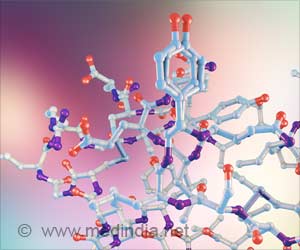Researchers at National Jewish Medical and Research Center have found that girls and children exposed to tobacco smoke respond particularly well to montelukast (Singulair).
Girls and children exposed to tobacco smoke may be benefited by using montelukast (Singulair), a new study by researchers at National Jewish Medical and Research Center has found.
Nathan Rabinovitch, MD, Associate Professor of Paediatrics, and his colleagues also identified two biomarkers that might help doctors predict even more precisely which patients will benefit from montelukast."These findings will help doctors know in advance which patients are most likely to benefit from montelukast and to tailor an effective treatment regimen for specifically them," Dr. Rabinovitch said.
For cases of persistent asthma, inhaled corticosteroids are considered the first-line treatment.
However, steroids alone do not effectively control asthma in 30 percent to 40 percent of patients and they might have some side effects, especially in kids.
In such cases, a secondary medication is often used - montelukast, one of the most widely prescribed medications for asthma and allergies, blocks the action of chemicals called leukotrienes, which contribute to inflammation.
However, doctors have found that montelukast is quite variable in its effectiveness, helping some patients but not others.
Advertisement
They followed the 27 asthmatic students from the Kunsberg School on the National Jewish campus for five months.
Advertisement
The primary measure of asthma control was how often children needed to use their short-acting rescue medication albuterol.
Before the children began taking montelukast, researchers found that when leukotriene levels in their urine rose, the children used 20 to 25 percent more albuterol two days later.
However, once they started taking montelukast, children did not need to take albuterol as often when their leukotriene levels rose.
Researchers also found that two groups of kids responded particularly well to montelukast: girls and children with high levels of cotinine in their urine, which indicated exposure to secondhand tobacco smoke.
Both had statistically significant reduced sensitivity to leukotrienes once they began taking montelukast.
"When looking at a general population of patients, montelukast does not appear to be very effective. However, in certain patients, the choice of motelukast may be warranted, particularly in school-age girls and children exposed to tobacco smoke," Dr. Rabinovitch said.
Researchers also found that measuring exhaled nitric oxide, a measure of inflammation in patients' breath, and leukotrienes in their urine, could also help them predict which patients would respond well to montelukast-- those with a high leukotriene/nitric oxide ratio.
"Increasingly we have come to understand that asthma is not just one disease; it is more likely several diseases that present with similar symptoms. Thus different medications are likely to work for different patients," Dr. Rabinovitch.
"It is important that we be more selective and tailor our medication regimen so that each child receives the most safe and effective treatment for their type of asthma," he added.
The study was recently published online and will appear in the June issue of the Journal of Allergy and Clinical Immunology.
Source-ANI
RAS/L









